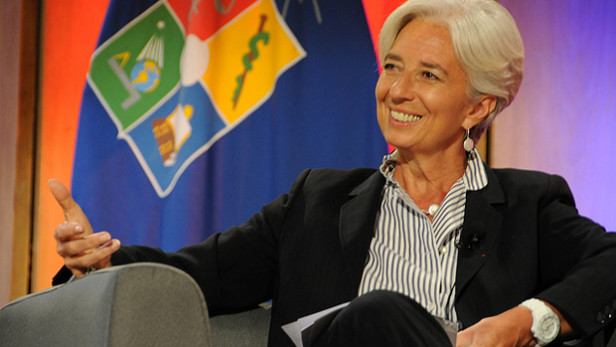Economic Empowerment
Source: Devex
The 21st century poses many challenges that require new ways of thinking, none more important than the economic role of women in a rapidly changing world.
The global economy is struggling to generate the growth that can provide a better life for all, and all can contribute, yet women remain blocked from contributing their true potential. This has a huge cost: In some countries, per-capita incomes lag significantly because women are denied equal opportunity. They represent half the world's population, but contribute far less than 50 percent of economic activity. Indeed, the gap between men and women in terms of measured economic activity ranges from 12 percent in the OECD countries to 50 percent in the Middle East and North Africa.
What is needed to change this picture is a concerted effort to open the door to opportunity with what I call the "3 L's" of women's empowerment: learning, labor and leadership.
First, learning: Education is the foundation upon which change is built. Learning helps women to help themselves and break the shackles of exclusion. Nowhere is this more essential than in the developing world: One study of 60 countries estimates that the economic loss from not educating girls at the same level as boys totals $90 billion a year. Another study suggests that an extra year of primary school boosts earning potential by 10-20 percent, and 25 percent for an extra year of secondary education.
There is an African adage that goes: "If you educate a boy, you train a man. If you educate a girl, you train a village." This is not only true, it is measurable. For example, women are more likely to spend their resources on health and education, investing up to 90 percent of their earnings in this way compared with just 30-40 percent for men. This spending creates a powerful ripple effect throughout society and across generations.
If learning is just the first step, work is the second: labor enables women to flourish and achieve their true potential.
But at present, when women participate in the workforce, they too often tend to get stuck in low-paying, low-status and low-security jobs — many in the informal sector of developing countries' economies. Is it surprising then that women and girls are the main victims of extreme poverty, representing 70 percent of the billion people struggling to survive on less than a dollar a day? Globally, women earn only three-quarter as much as men — even with the same level of education and in the same occupation. Surely one of our most basic norms should be "equal pay for equal work"!
Recent International Monetary Fund research shows that eliminating gender gaps in economic participation can bring increases in per-capita income. This can have a major impact — women control the purse strings in most households around the world, and more spending by women feeds into higher levels of demand and economic growth.
How can we promote more opportunity for women in the workplace? Sometimes it is about changing laws — for example, ensuring that property and inheritance laws do not discriminate against women. It also means policies that encourage education and health care and provide greater access to credit so that women can achieve greater economic independence. This is an area where the IMF is working hard to help through our analytical and capacity-building efforts in our member countries.
The playing field also must be leveled in richer countries. They need more pro-women, pro-family leave schemes; quality, affordable childcare; individual (instead of family) taxation; and tax credits or benefits for low-wage workers.
So learning and labor are key. The third "L" is leadership: enabling women to rise and fulfil their innate abilities and talents. Here, there is plenty of room for improvement: For example, women constitute only 4 percent of CEOs on the Standard and Poor's list of 500 companies and only a fifth of parliamentary seats worldwide.

The irony is that when women lead, they tend to do as good a job, if not a better job. One study shows that Fortune 500 companies with track records of raising women to senior positions are far more profitable than the average firms in their fields. Women also are less likely to engage in the reckless risk-taking behavior that sparked the global financial crisis in 2008. They are more likely to make decisions based on consensus-building, inclusion and compassion, with a focus on long-term sustainability.
It is true — and it is understandable, given the bias that exists — that women sometimes lack confidence to match their competence. But they need to change that mindset and reset the narrative in their favor. So it is essential that women be ready to "dare the difference" — to take risks and step outside their comfort zones.
Nonetheless, even those with the drive to succeed continue to face barriers. So I have come to the view that gender targets and quotas must play a role in ensuring women a place at the table. We must either force change or stay mired in complacency.
Whether we are talking about providing primary education for girls in a village or executive positions for women in business, it is time to create a world where all women can meet their potential without impediment or prejudice and the world will reap the benefits. The three L's will help us get there.
